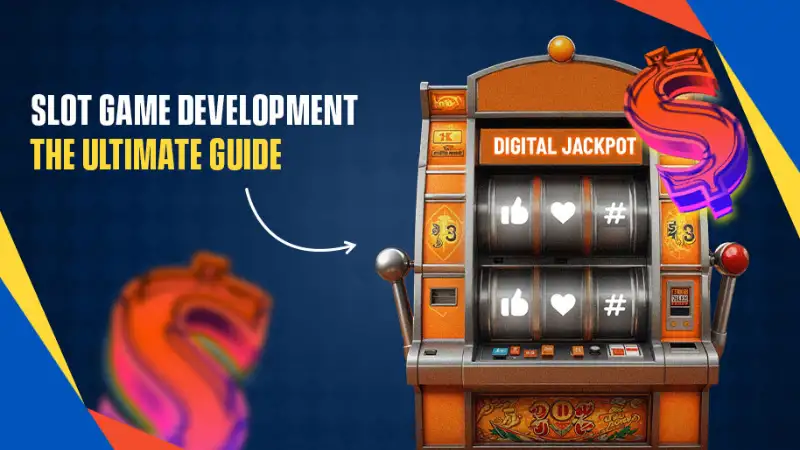
Slot Development
Building a hit online slot game demands skill, vision, and technical expertise at every stage. The journey of Slot Development involves planning, design, programming, testing, and launching. At Slot Pillar, we examine the full Slot Development lifecycle, showing how games go from a concept to a fully functional title that delights players and drives success.
Conceptual Design and Planning of Strategic Directions
The first stage of Slot Development is concept creation. A team meets to brainstorm themes, mechanics, and target audience. Ideas may include mythical tales, branded stories, or unique bonus features. At this early point, Slot Development requires market research to identify genres in demand and to evaluate player preferences.
Once a concept is chosen, the Slot Development team defines core elements: reel layout, number of paylines, RTP, volatility, and bonus round ideas. A strong concept ensures every later step in Slot Development aligns with player expectations and business goals.
Game Design and Asset Creation
After concept approval, Slot Development enters design phase. Game designers create sketches of the layout, control buttons, animations, and visual style. User interface flow—spin button, autoplay, paytable navigation—must be intuitive. This is a crucial part of Slot Development, since good design keeps players engaged and enhances gameplay.
Meanwhile, artists produce high-resolution illustrations for characters, backgrounds, and symbols. Animators bring those assets to life with spinning reels, winning effects, and interactive sequences. Sound designers add music, reel sounds, and bonus jingles. Strong audiovisual presentation during Slot Development helps the game feel polished and entertaining.
Prototyping and Core Mechanics
Once art and interface are in place, Slot Development moves to prototyping. Using game engines or proprietary software, developers implement reel logic, paylines, and core algorithms. This phase focuses on making sure basic mechanics work as expected and bonus features trigger correctly.
The Slot Development team tests balance between RTP, volatility, and bonus frequencies. Adjustments are common; if RTP is too high or too low, the team rebalances symbol weightings or scatter frequencies. This ensures the player experience feels fair and engaging.
Server-Side Engineering and System Infrastructure Setup
Parallel to frontend work, Slot Development involves building backend systems. These systems generate random outcomes via RNG and track player sessions and statistics. Secure server infrastructure supports multiplayer tournaments, progressive jackpots, and anti-fraud systems. Without robust backend work during Slot Development, the slot cannot reliably process bets or payouts.
API endpoints are created so that online casinos can integrate the slot. The Slot Development team ensures proper data handling, authentication, and logging to meet regulatory compliance.
Quality Assurance and Testing
A critical phase in Slot Development is testing. QA testers play thousands of simulated spins to confirm RTP, volatility, and feature probabilities align with design goals. They uncover bugs—such as interface glitches, missing animations, or logic issues. Effective Slot Development includes exhaustive QA testing to prevent technical failures in live environments.
Cross‑platform testing is also essential. Whether on desktop, smartphone, or tablet, the game should function consistently. Slot Development teams test across OS versions, browser types, and screen resolutions.
Compliance testing takes place too. Many jurisdictions require certified reports from testing labs. As part of Slot Development, developers submit code and performance data to bodies like GLI and eCOGRA to receive official seals of approval.
Tuning Architecture for Better Speed and Resource Management
Optimizing performance is part of advanced Slot Development. Developers reduce file sizes, compress images and audio, and streamline code so that games load quickly. They also ensure smooth animations even under frame rate fluctuations. Proper optimization during Slot Development ensures accessibility for players with various connections and devices.
Security hardening is included in this phase. Backend services are reinforced, and communication channels are encrypted. The Slot Development team audits vulnerabilities to prevent tampering, bots, or hacked clients.

Certification and Localization
Once internally tested and optimized, Slot Development moves to certification. Games are packaged and submitted for regulatory review. Legal checks are run in markets like the UK, Malta, and regional authorities. Communication with regulators is part of the Slot Development process until final approval.
Localization follows certification for global reach. The Slot Development team adopts multiple languages, local currency options, and culturally appropriate assets. This ensures compliance and player comfort in target regions.
Beta Launch and Soft Launch
Before full release, Slot Development teams conduct soft launches to gather real player data. Slots are promoted to limited demographics or geographic regions. Metrics on session length, feature engagement, and stability are monitored. Based on feedback, further tweaking in Slot Development ensures readiness for scale.
Brand Promotion and Launch Preparation
During final Slot Development stages, marketing begins. Teasers, videos, influencer previews, and bonus campaigns build anticipation. Casinos may offer contests or free spin promotions tied to the upcoming slot. These efforts are part of Slot Development rollout strategy, aiming to maximize initial hits.
Full Launch
After successful beta, the Slot Development team completes the transition to full launch. The game is added to operator platforms with marketing packages, paytable guides, and support structures. Slot Development efforts shift to monitoring market performance, responding to early user feedback, and handling technical issues during the live period.
Ongoing Client Support with Periodic Feature Improvements
Slot Development doesn’t end at launch. Developers monitor metrics like RTP, drop-off rates, session duration, and bug reports. Analytics help optimize gameplay balance and retention.
Content updates may follow—seasonal versions, new features, tournament attachments—to revitalize the game. Each update requires additional Slot Development work: coding, QA, and certification.
Monitoring Metrics and Evolving the Product Iteratively
Strong Slot Development teams rely on post-launch data to refine games. They examine where players abandon sessions, which paylines are underused, and how bonuses interact. This data drives iterations—fine-tuning volatility, adjusting RTP bands, or redesigning UI flows.
Analytics also feed into future Slot Development efforts, guiding concept selection and feature enhancements.
Team Dynamics in Slot Development
A successful Slot Development project requires cohesive teams: project managers, game designers, visual artists, sound engineers, backend and frontend developers, QA experts, compliance specialists, data analysts, and marketing support. Clear communication and coordination help to streamline the Slot Development pipeline and prevent bottlenecks.
Industry Trends in Slot Development
Modern Slot Development trends include HTML5 frameworks for browser-based gameplay, blockchain-backed provably fair systems, and AI-assisted balancing tools. Developers increasingly use player-generated data to personalize experiences and incorporate gamification elements like progression and missions.
Common Challenges in Slot Development
Budget constraints, strict regulation, cross-border localization, and evolving device specs make Slot Development complex. Maintaining creativity while ensuring fairness and technical stability is demanding. Unexpected bugs or regulatory delays can impact launch timelines significantly.
Best Practices for Slot Development
Prioritize player experience and mobile-first design. Maintain clear documentation, modular code, and automated testing frameworks during Slot Development. Engage early with compliance teams to avoid last-minute hold-ups. Use analytics and soft launch data to inform priorities.
Future Outlook for Slot Development
As technology evolves, Slot Development will include AR/VR integration, dynamic bonus systems, real-time customization, and advanced personalization. Developers may explore social and livestream features, creating hybrid casino-social experiences. Cross-platform ecosystems will define next generation Slot Development pipelines.
Conclusion
Slot Development is a comprehensive process involving conception, design, programming, testing, optimization, certification, launch, and post-launch iteration. With each phase requiring attention to technical detail, regulatory compliance, and player psychology, effective Slot Development ensures successful, trusted, and enjoyable gaming products.
To follow the latest Slot Development techniques, industry trends, and best practices, keep exploring Slot Pillar, where experts decode game creation from start to finish.



